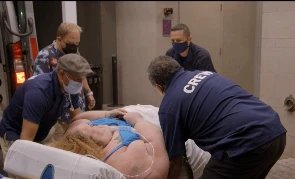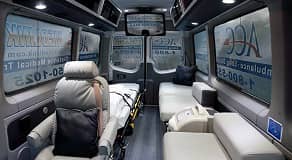According to the US Department of Health and Human Services’s Administration on Aging, by the year 2030, 19% of the population will be 65 years of age or older, a figure almost double what it was in 2000. This increasing concentration of elderly persons bodes significant import for the entire society, one that is already evolving to accommodate the interests, requirements and proclivities of millions of people in the final decades of life. In particular, it has served to expand the transportation industry’s health care and medical transport niche. The need for services such as Long Distance Ambulance transportation, Interstate medical transport, and state to state patient transportation are predicted to increase exponentially in coming years.
Reasons to Need Long Distance Medical Transport
There are many reasons why a person might need long distance medical transportation. A patient may need to be moved to a different hospital for treatment, but be unable to get there on his own. Or, perhaps a patient might need to be moved from a hospital in one state to a rehab center in another. State to state medical transportation is becoming not just increasingly popular, but also, increasingly common. Whereas at one time, medical transportation was primarily associated with emergency transport, today, more and more senior citizens are moved from one place to another via a ground Long Distance Ambulance.
Types of Long Distance Medical Transport
There are two primary types of long distance patient transport: ground and air. Air, obviously, is faster, whereas ground transportation costs less. In each case, provisions are made according to whether the patient is ambulatory, wheelchair bound, or in need of a stretcher. Where ground transportation is concerned, the primary factor to consider is the size of the ambulance. Technically, an ambulance is any vehicle used for patient transportation. However, they vary from vehicles built on a long-wheelbase van and have an integrated cab to those built on a truck chassis and have a separate driver’s cab. Generally speaking, the larger the interior space of an ambulance, the more comfortable the patient’s experience will be.
Factors to Consider When Planning Medical Transportation
Important factors to consider with the transportation of a patient or loved one vary from one situation to the next. In general, when planning medical transportation, look for at least three attendants, as well as the provisions and training necessary to handle any type of emergency that might arise en route. Also, consider vehicle maintenance and the amount of available interior space. It often comes down to the fact that patients are generally more comfortable in ambulances with more space. Whether the additional room is used to accommodate additional attendants or to enable requisite maneuvering, more likely than not, interstate elderly transport comfort hinges greatly upon the amount of room the ambulance provides.
There are additional provisions that typically make the difference between bare bones transportation and a reasonably enjoyable experience and comfortable trip. Inclusions such as the quality of the mattress, the congeniality of the medical attendants, and the provision of a DVD and/or CD player for the purposes of entertainment all make a difference in the quality of the patient’s overall experience. The willingness on the part of the transport company to allow a friend, relative, or even a pet, to accompany the patient also stands as a means to make a tremendous amount of difference to both the patient and to his or her family.
It can be helpful to think of a Long Distance Ambulance as a hospital on wheels. Not only does long distance ambulance transportation ensure more room for the patient and those who accompany him or her to move about, it also ideally provides three staff members to see to the patient’s comfort, medical needs, and well-being.
As the populace continues to age, services such as long distance transportation by ambulance will no doubt continue to grow, both in terms of efficiency and in terms of options and service. Already, long distance ground ambulances provide an essential service not only to the elderly, but their families as well. They also service hundreds of thousands of hospitals, rehabilitation centers, inpatient clinics, and other facilities. Patient transportation by ambulance facilitates not only better care for millions, but also eases the burden of their long-term caretaking.

When choosing a medical transport service provider, you must ensure to choose one that not only focuses on getting you to your destination, but also prioritizes using the safest, most conducive, and most efficient sets of vehicle fleets and equipment to do the job.

ACC Medlink appeared on the TLC television network reality show “1000 LB Sisters” to transport one of the cast members from Ohio to a doctor in Kentucky. Filmed in late 2022, ACC Medlink, four of its employees and the journey they took with Tammy Slaton were featured in episode 6 of season 4, which originally aired on February 21, 2023.

ACC Medlink is proud to announce the addition of a new line of elite medical sprinter vans to our long distance medical transport fleet. This addition will allow ACC Medlink to continue to provide superior service and outstanding care for those in need of medical transport out of state...
